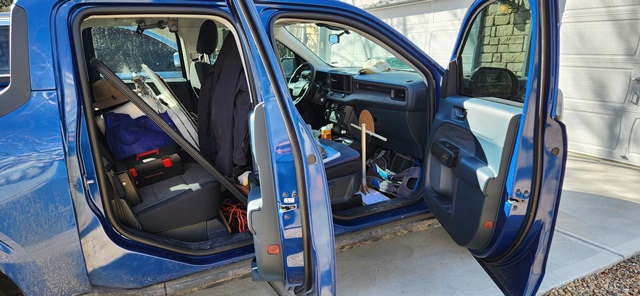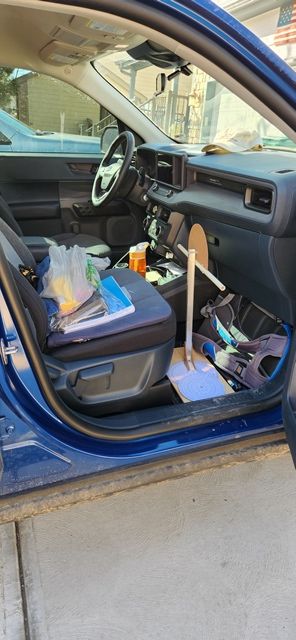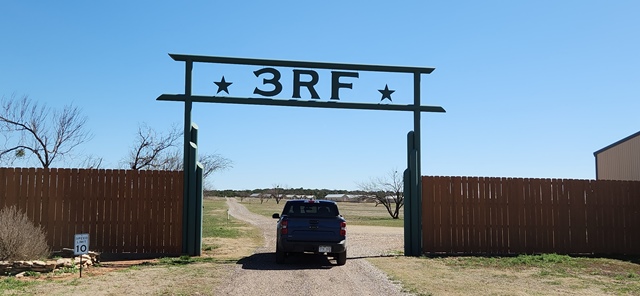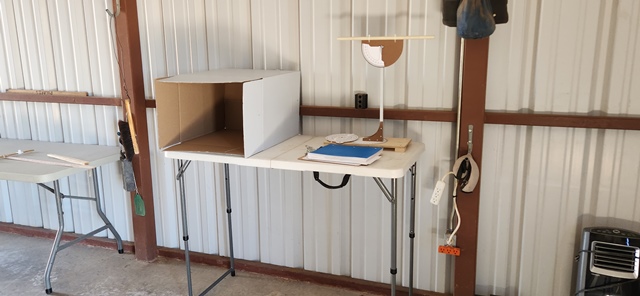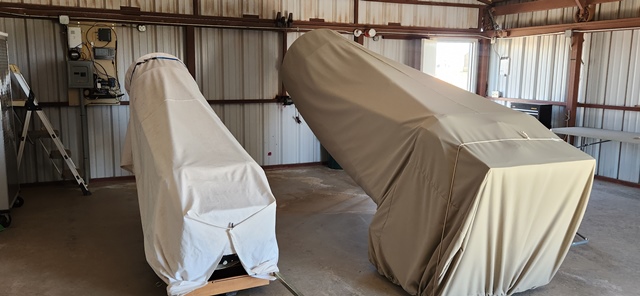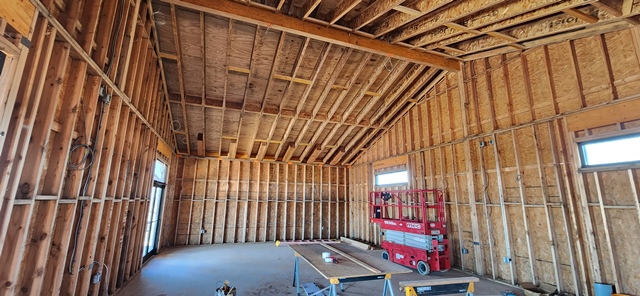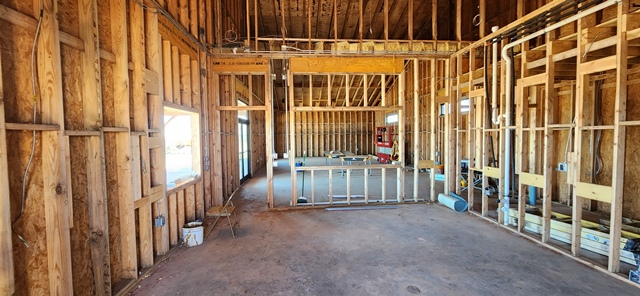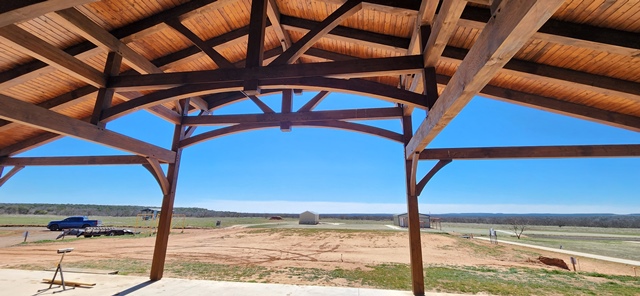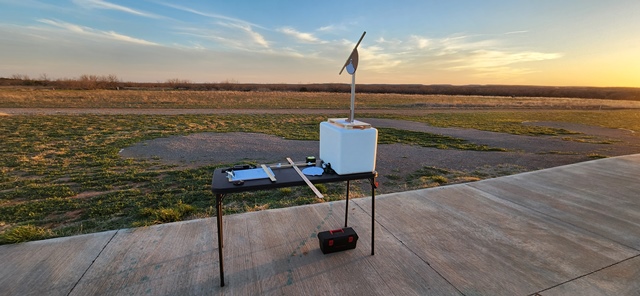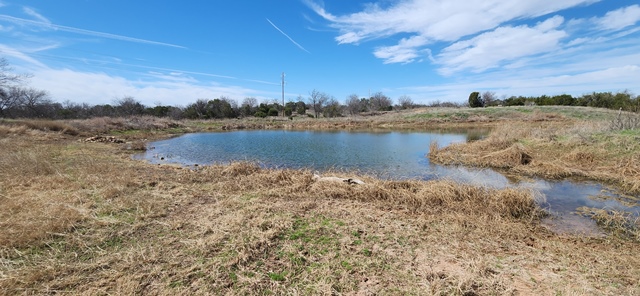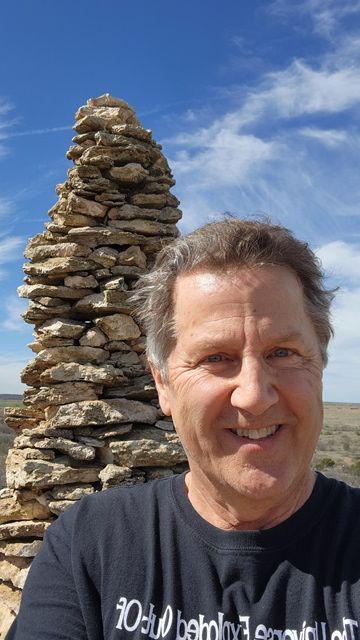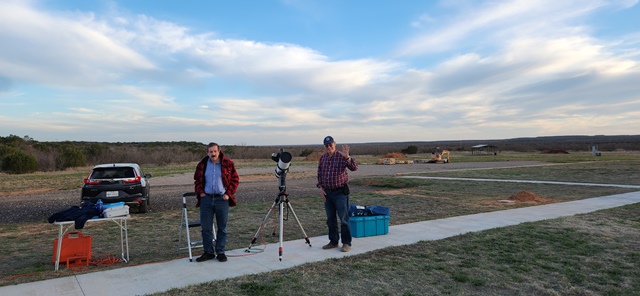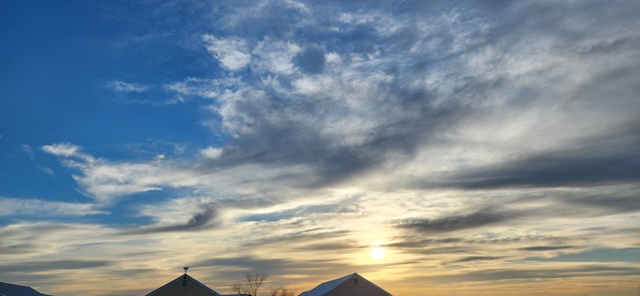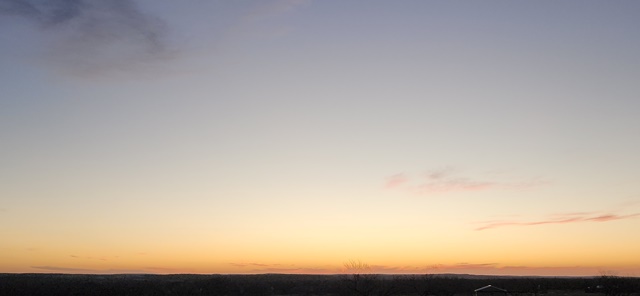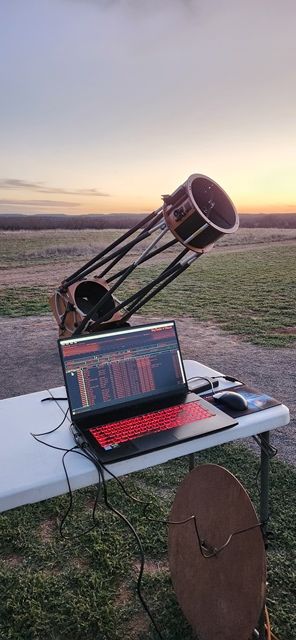I went to the Comanche Springs Astronomy Campus, sponsored by the Three Rivers Foundation (3RF) from March 3, 2024 through March 6, 2023. I met Gary Carter, Ed Flashpoler and Mike Roos there to observe with.
I packed my Ford Maverick up with the items I would use to observe with at 3RF. I left about 11 am on Saturday, March 2 and headed south to Texas. I drove to Limon and then south on US 287. I spent the first night in Amarilo, Texas.
I had a nice steak at the Big Texan.
This is my room in the Amarillo Baymont Hotel.
I arrived at 3RF about 11:30, Sunday March 3. The skies were clear, but a brisk wind from the west was blowing.

I shared Cabin #4 with Gary and Ed.
I knew we all had a lot of stuff, so I got these two green chairs from Bunkhouse #2 and made an area for my stuff. It worked out well for the stay.
I setup observing items in the roll-off shed. One of my goals for this trip was to record transiting stars with my quadrant, Astrolabe and Jacob's Staff. All I needed to do was to take this outside and I was ready to go.
The 20-inch (on the left) and the 30" (on the right) are still stored in the roll-off.
The main building, the icon of the Campus.
They workers had made great progress of the Pavilion since my last visit on April, 2023.
The March, 2024 image of the Pavilion
and the April 2023 image of the Pavilion.
The inside framing of the March 2024 Pavilion
and only the rafters being set, when I left in April, 2023.
The kitchen area looking west towards the indoors eating area.
There were electricians here every day, working to get the Pavilion wired.
Looking south from the front doors of the Pavilion.
Sunday March 3. I have my quadrant, Astrolabe and Jacob's Staff ready to record Astronomy Before The Telescope Observing Program's transiting navigation stars.
I found that I could not see the tabs onthe Jacob's staff in the dark to measure the altitude of the transiting star with this instrument. I found the limitation of using the staff. It is great for measuring anbles between stars in the sky, like the length of Orion's Belt. It does not work when it is dark and you cannot easily see the horizon.
I love selfies.
I got the 20-inch out to use this night. There was a waiting time for the stars I would record to reach the meridian. Mike Roos and I looked at objects on our lists with this telescope.
You many not know this about me, but I like to take selfies with my equipment I will observe with.
Monday, I hiked to the Beaver Pond. This is the most water I have ever seen in the pond.

My goal was at the end of the trail, to see the Water Marker. Yes, another slefie.
I think this is the Blue River, seen below the mesa the Water Marker is on. It had a lot of water, puddled in it.
Ed's 6-inch Astrograph telescope. He used his DSLR camera to take pictures of deep sky objects.
Ed bought this telescope from John Wagoner for $300. Spent another $160 for a hand controller and he has a find astro-imaging setup.
Mike Roos and Ed Flashpoler waiting for the sky to darken.
Almost every day, the wind blew all day and there were clouds in the afternoon.
By the time astronomical darkness, the sky always cleared.
A group of people visited the Campus. They were imagers. They received a tour of the facility by Gary Carter. Then setup their cameras on tripods to get star trails with the dome in the background.
Tuesday evening's sky. It was a very clear and transparent night of observing.
I was ready with my laptop, running Sky Tools 4. My observing list for the night is displayed.
On Wednesday morning, this crew showed up to possibly start siding the outside of the Pavilion.
I drove all the way home and arrived in Broomfield about 7:30 pm.
